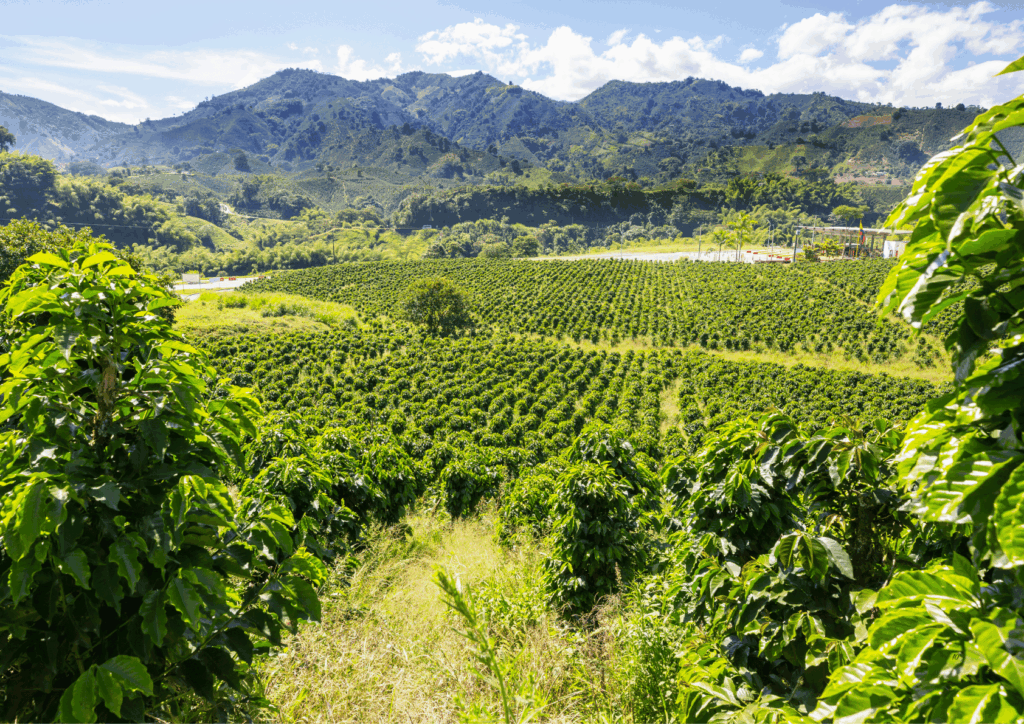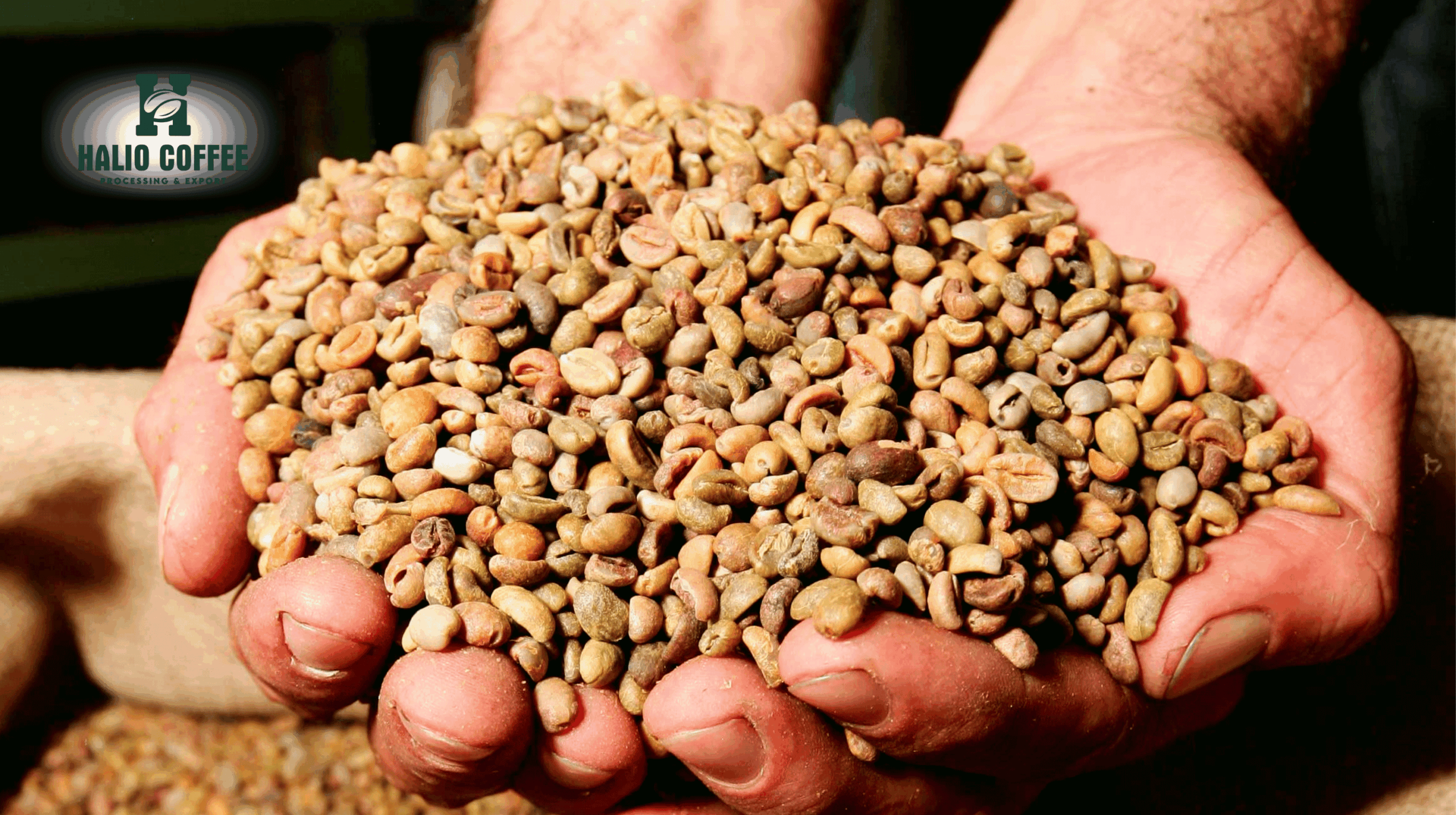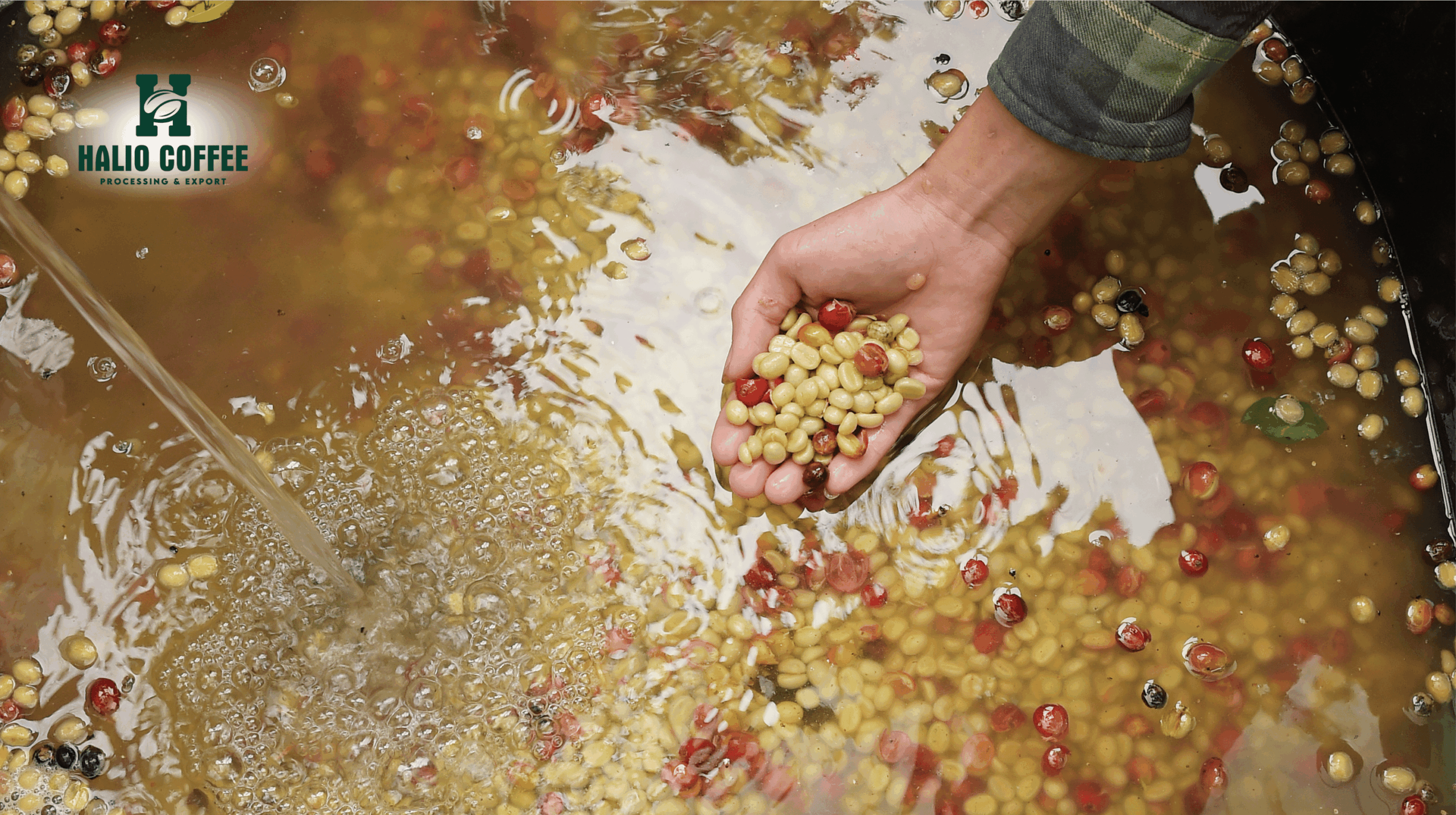Coffee Growing Regions: A Global Tapestry of Terroir and Flavor, with a Focus on Vietnam’s Evolving Landscape
For coffee roasters, coffee manufacturers, and green coffee bean distributors worldwide, understanding Coffee Growing Regions is paramount. The unique combination of climate, altitude, soil, and specific coffee varietals in a region profoundly shapes the Natural Coffee Flavor Profile and overall quality of the green coffee beans. This intricate relationship between geography and taste is what drives the diversity and excitement within the specialty coffee market.
1. The Coffee Belt: Where Coffee Thrives
Coffee plants, specifically Coffea arabica and Coffea canephora (Robusta), thrive within a specific geographical band known as the “Coffee Belt” or “Bean Belt.” This zone lies roughly between the Tropics of Cancer and Capricorn.
1.1 Ideal Conditions Across the Belt
While specific conditions vary, all significant Coffee Growing Regions share common ideal characteristics necessary for optimal coffee bean quality:
- Temperature: Stable temperatures between 15°C and 28°C (60°F-82°F) are crucial for Arabica Coffee, while Robusta can tolerate slightly warmer conditions. Extreme temperatures can stress the plant and negatively impact bean development.
- Rainfall: Consistent and ample rainfall (1,500-2,500 mm annually) is vital, along with distinct wet and dry seasons. The dry season often triggers flowering, while the wet season supports cherry maturation. Proper water management is increasingly critical in all Coffee Growing Regions.
- Altitude: This is a critical factor, especially for Arabica Coffee, which typically flourishes at high-altitude coffee regions (600-2,200 MASL). Higher altitudes generally lead to slower cherry maturation and denser, more complex beans. Robusta can grow at lower elevations, from sea level up to 800 MASL.
- Soil: Rich, fertile, well-drained volcanic soil is often preferred, providing essential minerals and nutrients for healthy plant growth and flavor development.
- Topography: Sloping terrains are beneficial as they prevent waterlogging and allow for good drainage, which is crucial for healthy root systems and overall plant vitality.
2. Major Coffee Growing Regions by Continent
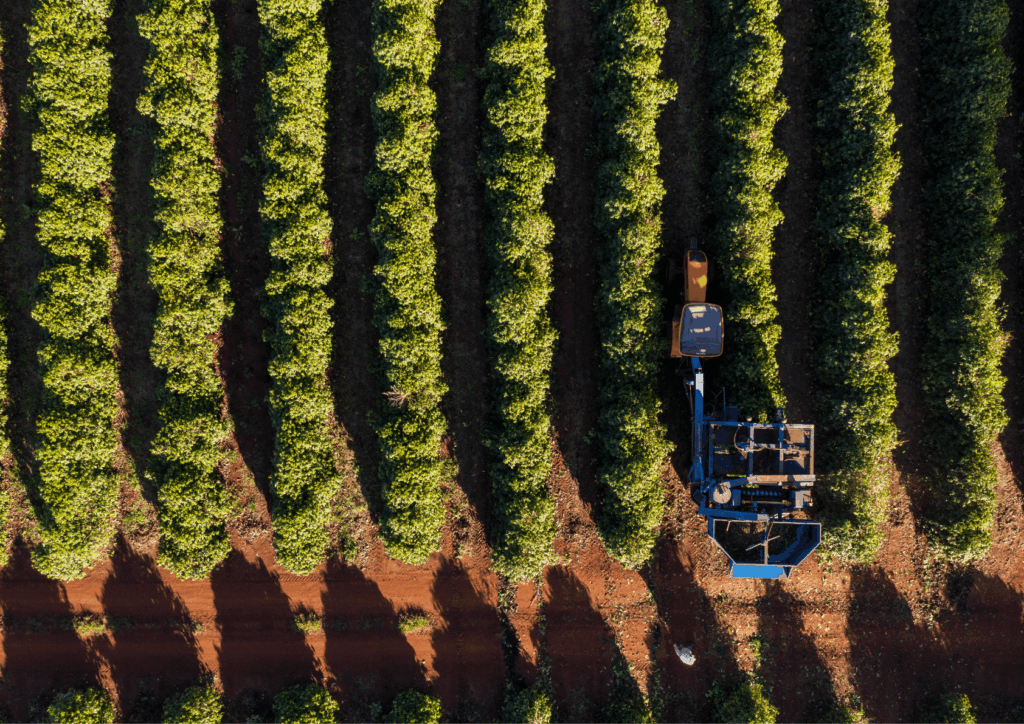
Each continent within the Coffee Belt offers a distinct range of Coffee Growing Regions, contributing to the global tapestry of coffee flavors. Understanding these broad categories is the first step for any green coffee bean distributor.
2.1 Central and South America
This region is the largest producer of Arabica Coffee globally, known for its diverse profiles and often consistent supply.
- Brazil: The world’s largest coffee producer by volume, growing both Arabica and Robusta.
- Characteristics: Often full-bodied, low acidity, notes of chocolate, nuts, and caramel. Frequently used as a foundational component for espresso blends due to its consistency and body. Many beans from Brazil are processed using the Natural Coffee Flavor Profile method.
- Prominent Regions: Minas Gerais (the largest), São Paulo, Espírito Santo, Bahia.
- Colombia: Renowned for high-quality washed Arabica, often marketed as “milds.”
- Characteristics: Medium body, bright, clean acidity (often citrusy or malic), sweet, nutty, and sometimes red fruit notes.
- Prominent Regions: Huila, Nariño, Antioquia, Cauca, Tolima.
- Costa Rica: Known for clean, bright, and well-balanced Arabica Coffee, with a strong emphasis on environmental sustainability.
- Characteristics: High, sparkling acidity (often citrus), light to medium body, and a clean finish.
- Prominent Regions: Tarrazú, Central Valley, West Valley.
- Guatemala: Diverse microclimates produce unique and often complex coffees.
- Characteristics: Full body, pronounced acidity, notes of chocolate, spice, and fruit (berry, citrus).
- Prominent Regions: Antigua, Huehuetenango, Atitlán, Acatenango Valley.
2.2 Africa
The birthplace of coffee, Africa is home to incredible genetic diversity and unique flavor profiles, particularly in specialty coffee.
- Ethiopia: The spiritual home of coffee, offering immense genetic diversity (heirloom varietals).
- Characteristics: Highly complex, often intensely fruity (blueberry, strawberry, tropical), floral (jasmine, bergamot), and tea-like, with a bright, intricate acidity. Both Natural Coffee Flavor Profile and washed processes are prominent.
- Prominent Regions: Yirgacheffe, Sidama, Harrar, Guji, Limu.
- Kenya: Famous for its bold, complex, and highly acidic coffees, often with a unique tartness.
- Characteristics: Bright, tart acidity (often blackcurrant, tomato, or grapefruit), full body, juicy mouthfeel. Typically fully washed.
- Prominent Regions: Central Province (Nyeri, Kirinyaga), Eastern Province.
- Rwanda & Burundi: Emerging specialty coffee origins known for meticulous processing and significant quality improvements.
- Characteristics: Sweet, often floral, citrus, red fruit notes, with a clean and delicate cup.
- Yemen: A historical dry process origin, known for its ancient coffee traditions.
- Characteristics: Unique, sometimes wild, fruity, and spicy notes, often with earthy undertones due to traditional natural processing.
2.3 Asia-Pacific
This region is a significant producer of both Arabica and Robusta, with a rapidly growing emphasis on specialty coffee and innovative processing.
- Vietnam: The world’s second-largest coffee producer by volume, predominantly Robusta, but rapidly growing in specialty Arabica.
- Robusta Characteristics: Bold, strong, earthy, high caffeine content. Primarily from the Central Highlands (Dak Lak, Dak Nong, Gia Lai). Used extensively in espresso blends and traditional Vietnamese coffee. Vietnam is a leader in high-quality Robusta.
- Arabica Characteristics: (See Section 3 for more detailed insight into Vietnam’s Arabica regions). Balanced sweetness, tropical fruit hints, robust body, and integrated acidity. Growing regions include Lam Dong (Cau Dat, Da Lat), Son La, Dien Bien, and Quang Tri (Khe Sanh). These are increasingly providing High Altitude Arabica Coffee Beans and diverse Natural Coffee Flavor Profile options.
- Indonesia: Known for its unique, often earthy and full-bodied coffees, particularly from Sumatra and Sulawesi.
- Characteristics: Low acidity, heavy body, notes of earth, spice, dark chocolate, and sometimes herbal or woody notes. Predominantly processed using the unique wet-hulled (Giling Basah) method.
- Prominent Regions: Sumatra, Java, Sulawesi, Flores.
- India: Produces both Arabica and Robusta, often grown under a multi-layered shade canopy which contributes to unique flavors.
- Characteristics: Medium body, low acidity, spicy, chocolaty notes. Famous for Monsoon Malabar, a unique process where beans are exposed to monsoon winds.
- Prominent Regions: Karnataka, Kerala, Tamil Nadu.
- Papua New Guinea: An emerging origin for quality Arabica, with coffee often grown by smallholder farmers.
- Characteristics: Medium body, moderate acidity, sweet, often tropical fruit and chocolate notes, sometimes a clean, earthy character.
3. Vietnamese Coffee Growing Regions: A Deep Dive into an Emerging Specialty Power
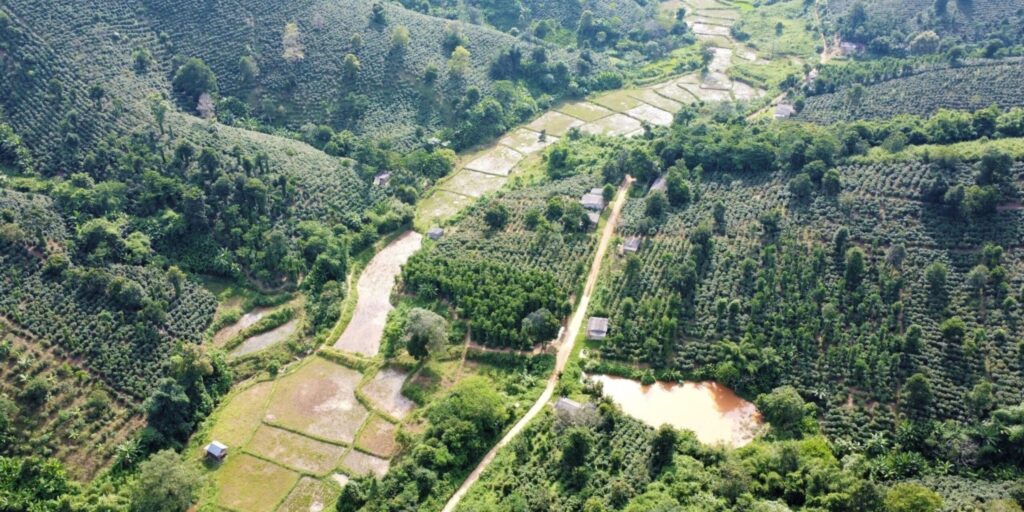
Vietnam’s coffee industry, exemplified by companies like Halio Coffee Co., Ltd., is undergoing a remarkable transformation. While its foundation is in high-volume Robusta, there is a strong and growing focus on expanding its Arabica Coffee footprint, particularly in the specialty coffee segment. This evolution offers exciting opportunities for global coffee roasters and coffee manufacturers.
3.1 Arabica Dominant Regions in Vietnam
Vietnam’s high-altitude coffee regions are gaining global recognition for their distinct Arabica profiles. Halio Coffee actively sources from and highlights the quality of these areas:
- Lam Dong Province (Cau Dat, Da Lat):
- Altitude: 1,300–1,600 MASL.
- Characteristics: Considered the flagship of Vietnamese specialty Arabica. Produces High Altitude Arabica Coffee Beans with distinctive floral aromas, bright acidity (often citrusy), and nuanced notes of chocolate and stone fruit. Popular coffee varietals here include Catimor, Typica, and Bourbon. Halio Coffee’s “Arabica S18 Fully Washed | Arabica Specialty | Lam Dong Origin” is a prime example of the quality achievable from this region, consistently reaching high cupping scores.
- Processing: There’s a strong emphasis on meticulously executed Washed and Natural Coffee Flavor Profile methods, with increasing adoption of Honey processing for balanced sweetness.
- Son La Province (Moc Chau, Thuan Chau):
- Altitude: 900–1,400 MASL.
- Characteristics: An emerging region for Vietnamese Arabica coffee known for its balanced body, mild acidity, and comforting nutty and caramel undertones. Halio Coffee’s “Arabica Sơn La Full Washed” exemplifies the clean and consistent profiles from this region’s raw coffee beans.
- Processing: Predominantly Washed, with increasing experiments in Natural and Honey processing methods to diversify offerings.
- Quang Tri Province (Khe Sanh):
- Altitude: 1,000–1,200 MASL.
- Characteristics: Still developing its global presence but highly promising for Arabica Coffee with remarkably clean profiles, a juicy mouthfeel, and intriguing notes of red apple and dark chocolate, reflecting its unique terroir.
- Processing: Focus on quality-driven methods to highlight its distinctive attributes and achieve higher cupping scores.
3.2 Robusta Dominant Regions in Vietnam
Vietnam’s Central Highlands are globally synonymous with high-volume Robusta production, known for its bold flavor and high caffeine content. Halio Coffee, rooted in Buon Ma Thuot, highlights its sourcing from these prolific areas:
- Dak Lak Province (Buon Ma Thuot):
- Altitude: 400-800 MASL.
- Characteristics: The largest Robusta growing region in Vietnam, producing full-bodied, strong, and earthy coffee. Ideal for traditional Vietnamese coffee, robust espresso blends, and instant coffee. Halio Coffee’s direct presence in Buon Ma Thuot ensures deep local knowledge and direct access to top-tier Robusta green coffee beans.
- Processing: Primarily Natural/Dry Process, with increasing focus on producing “clean” Robusta (e.g., Halio Coffee’s “Robusta Clean [Best Seller]”) through improved post-harvest handling.
- Dak Nong, Gia Lai, Kon Tum:
- Altitude: Similar to Dak Lak, with varying microclimates that contribute to nuanced Robusta characteristics.
- Characteristics: These regions consistently produce strong, high-quality Robusta beans. Halio Coffee sources “Robusta Natural Coffee” and “Robusta Honey Processed Coffee” from these extraordinarily abundant localities, demonstrating their commitment to diverse Robusta offerings.
- Processing: Diverse, including Natural and Honey processes for enhanced complexity and sweetness, and Wet Polished for cleaner cups, expanding the potential applications for Robusta green coffee beans.
See more:
- Coffee Processing Methods
- Halio Coffee – Your Trusted Fresh Coffee Distributor of Robusta & Arabica Beans
4. Strategic Sourcing based on Coffee Growing Regions for Coffee Businesses
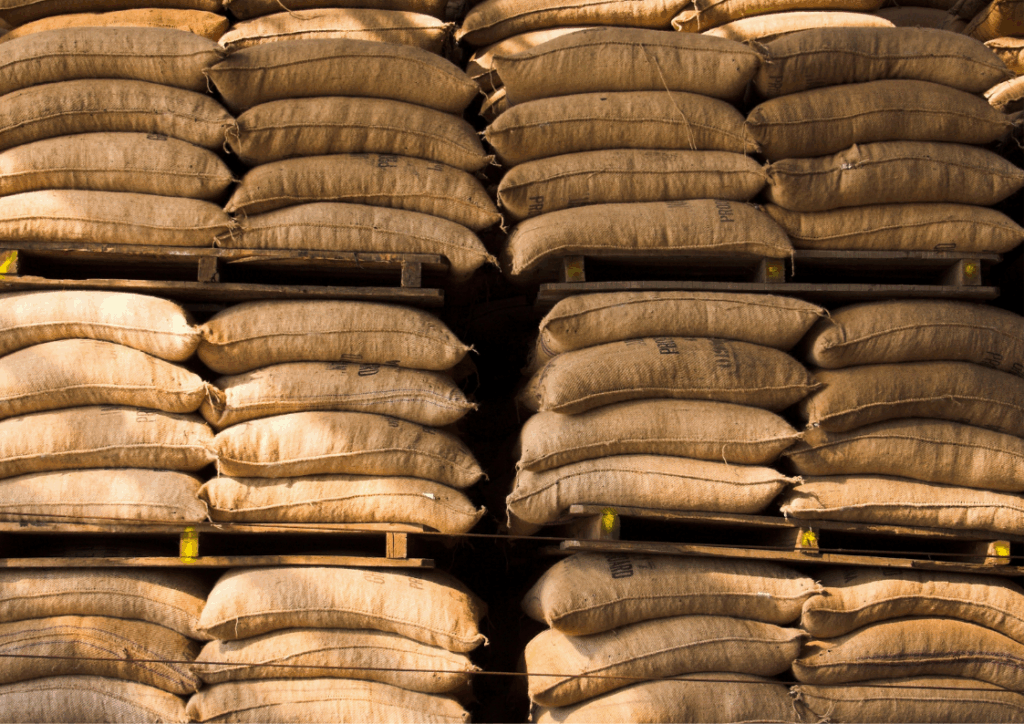
For coffee roasters, coffee manufacturers, and green coffee bean distributors, understanding regional nuances and a supplier’s expertise in these regions allows for highly strategic sourcing and innovative product development.
4.1 Leveraging Regional Diversity for Market Advantage
- Product Differentiation: Sourcing from diverse Coffee Growing Regions allows businesses to offer a wide and appealing range of flavor profiles. This can include bright African Arabicas, earthy Indonesian Robustas, or the increasingly complex Specialty Coffee Beans from Vietnam, each with its own compelling story.
- Blend Creation: Utilize specific regional characteristics to build balanced and unique espresso blends or filter coffee blends. For instance, a rich Brazilian Arabica might form a solid base, complemented by a bright Colombian, and uplifted by a vibrant Vietnamese natural with a distinct Natural Coffee Flavor Profile.
- Single-Origin Offerings: Showcase the distinct terroir of a specific region, like a High Altitude Arabica Coffee Bean from Cau Dat, Vietnam, as a premium single-origin offering, appealing to discerning consumers who value transparency and unique taste experiences.
4.2 Sourcing from Vietnam’s Growing Regions with Halio Coffee Co., Ltd.
Halio Coffee, as a dedicated Vietnam Coffee Exporter, provides a reliable and knowledgeable gateway to these evolving Coffee Growing Regions:
- Access to Premium Vietnamese Arabica: Halio Coffee’s direct relationships with coffee producers in Lam Dong, Son La, and Quang Tri ensure direct access to Specialty Coffee Beans with defined flavor profiles and high cupping scores. This eliminates intermediaries and ensures transparency.
- Diverse Processing Options: Halio offers Arabica Coffee processed by Washed, Natural, and Honey methods, allowing buyers to select based on desired Natural Coffee Flavor Profile or traditional characteristics for specific product lines.
- Robust Robusta Supply: For coffee manufacturers and coffee roasters requiring strong, consistent Robusta, Halio’s extensive network in Vietnam’s Central Highlands ensures a stable supply of high-quality raw coffee beans for various applications, from traditional Vietnamese coffee to industrial use.
- Traceability and Quality Assurance: Halio emphasizes a strict selection process (100% ripe cherries), proper processing, and high-quality standards. Their commitment to cupping and grading ensures adherence to international quality benchmarks, providing confidence in their green coffee beans.
- EUDR Compliance Readiness: Halio’s stated focus on conservation, supporting local communities, and ensuring traceability positions them as a forward-thinking partner for ethically sourced coffee, crucial for compliance with the EU Deforestation Regulation (EUDR).
The vast and diverse landscape of Coffee Growing Regions offers an incredible spectrum of flavors and opportunities for the global coffee industry. Each region, with its unique blend of climate, altitude, and cultivation practices, contributes distinct characteristics to the green coffee beans it produces. Vietnam, in particular, is undergoing a remarkable evolution, moving beyond its traditional role as a major Robusta producer to emerge as a significant source of Specialty Coffee Beans, especially High Altitude Arabica Coffee Beans. For coffee roasters, coffee manufacturers, and green coffee bean distributors, exploring and strategically sourcing from these diverse regions, particularly with a trusted partner like Halio Coffee Co., Ltd. (a Vietnam Coffee Exporter with deep roots in these regions), opens up new avenues for product innovation, market differentiation, and delivering exceptional coffee experiences to consumers worldwide. The future of Vietnamese coffee is bright, characterized by increasing quality, diversity, and a strong commitment to sustainable practices.
- How Coffee Roasters Are Fighting Rising Costs
- Beyond the Blend: The Ultimate Guide to Partnering with a Single Origin Arabica Roasted Coffee Distributor
- Arabica Coffee: The World’s Most Beloved Bean – A Comprehensive Guide for Coffee Businesses
- The Sourcing Blueprint: A Consultant’s Master Guide to Find Coffee Suppliers in Vietnam
- Coffee Prices Today 29/9: Have US 50% Tariffs Shifted Brazilian Coffee Flows?
